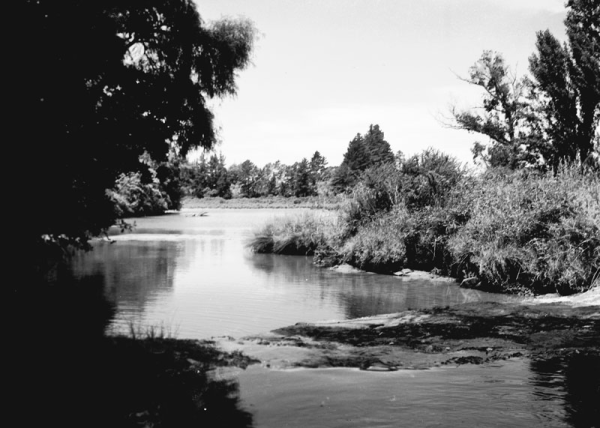The Inside Story – tales behind the names in Massey.
We often don’t give a second thought to the
stories behind the names of our roads, schools, creeks and more, but delving
into the history of Massey I have unearthed some interesting facts and
anecdotes.
The suburb itself was named in 1915 after one of New
Zealand’s most significant politicians, the then Prime Minister William Ferguson Massey (1856-1925). Prior to that, the sparsely populated area was
known as Lawsonville, after settler John Lawson who had an orchard by the creek
that also bears his name.
Elizabeth Freeman (nee Gregory), who was born in
Lawsonville in 1898, described it as, “wilderness, supporting a few cottages…a
windswept, low [manukau] scrub desolate area, the ground being exceptionally
poor”. Lawson’s Creek was home to a number of gum diggers who built simple
whare on its banks. Read
an 1889 New Zealand Herald
article reporting the fate that befell one such man.
English settler John Henry Colwill (middle row,
second right) who started a typewriting and supplies business in central
Auckland in the late 1890s would later make his mark on the area.
In the early 1900s the successful businessman
turned his sights turned towards the west and purchased approximately 1,500
acres in the area that would become Massey. He established Lincoln Park Orchards,
offering a home delivery service and the opportunity to sample fresh fruit at his
city office, Colwill Chambers, Swanson Street, and built a house on land he
named Lincoln Park Estate. Lincoln Road, Henderson, and Lincoln Heights School
reference these.
A man from Madeira known as Don Buck (real name Francisco Rodrigues Figueira), ran a gum diggers’ camp on his land near the Swanson Stream at the bottom of what is now Don Buck Road. The camp came to the attention of the authorities following a death in 1912 (read the New Zealand Herald article about it here) and the following year it was inspected by the District Health Officer, as reported here. Despite the reputation of the camp, locals evidently found Don Buck to be a gentleman.
Massey started its development as a commuter suburb after the North West Motorway extension in the late 1950s and opportunities arose for families to subdivide, e.g. the Sturm’s orchard property on Royal Road came up for sale in 1966:
Sturm Avenue today:
Dairyman Mr Spargo worked for Colwill and also had a small farm on Royal
Road. One of the first roads (clay, unsealed) to be constructed in Massey after
Royal, Colwill and Moire Roads was named after him.
The McWhirter family farm is currently being
developed; roads and residential property are rapidly transforming the
landscape. McWhirter Farm Lane, off Westgate Drive, references the family and
part of the farm is earmarked as a Special
Housing Area by Auckland Council.
Find out more about Massey in these Auckland Libraries’ resources:
- Oral history interviews on the subject of Don Buck. Marianne Simpkins (Interviewer). (1967)
- Massey. [Elizabeth Freeman].
- Massey, West Auckland : a palimpsest : insights into Massey as it was in 1850, 1900, 1950 and 2000. Gillian Ruffles. (2004)
- Massey history: a special interest study by pupils of Colwill School. (1982) held at West Auckland Research Centre, Archives - Accession 2015.1.
- Waitakere street names: a guide to the history of Waitakere street names. compiled by Auckland Libraries











wow this is some good information
ReplyDeleteI lived on Colwill for many years and when I was young, we did a project at school about the history of the area. I interviewed Mrs Sturm who, in 1983, still lived in the house at the top of Colwill Rd (standing on Colwill facing Royal Rd it was the house on the right hand corner). She told me about how the land used to be orange orchards and how it used to take a long time to get to the city from there before the motorway. Terence Sturm (an eminent University of Auckland lecturer) was related to her. She also told me about a story about her mother. It was during the war and her brother (or maybe it was her father) was away fighting in the war. One day her mother received the dreadful news that her loved one had died in the fighting. She said that her mother didn't say anything but went and proceeded to close every blind in the house and then went to her room. The next morning, when she awoke and saw her mother, her mother's entire head of hair had turned white overnight. She said that she witnessed this with her own eyes where it had turned from, I think it was brown or dark hair, in one night, to be completely transformed to pure white. She said it was from the incredible grief and shock. I have always treasured those visits I was able to have with her and the history of the area she was able to share with me back then.
ReplyDeleteI too know of an exact instance where the widows hair turned white overnight after hearing of the loss of her husband during World War II Such a sad time for many
ReplyDelete